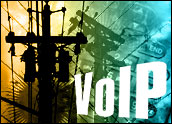
In a move that could at once spur the emergence of a fast-rising technology and possibly give an upper hand to traditional telecommunications companies, the Federal Communications Commission (FCC) voted today to require most providers of voice over Internet protocol (VoIP) service to offer enhanced 911 emergency calling.
E911, as the technology is known, sends emergency calls through a routing system that automatically identifies the origin of the call and directs it to the appropriate emergency agencies. The technology has been credited with dramatically improving public safety by reducing response times, eliminating confusion and aiding in cases when the caller cannot speak to a dispatcher.
The FCC called IP services the “latest new frontier of our nation’s communications landscape” and said it remains “committed to allowing IP-enabled services to evolve without undue regulation.” However, the agency said it felt that the importance of E911 as a response tool to various types of emergencies overrode the need to keep government hands off the emerging industry.
‘Reasonable Expectation’
Providers of instant messaging platforms are exempt from the ruling, even those that offer a voice calling feature. Instead, only VoIP services that use the public switched telephone network (PSTN) to complete calls are covered. Those carriers have 120 days to comply with the order or face sanctions.
“Anyone who dials 911 has a reasonable expectation that he or she will be connected to an emergency operator; this expectation exists whether that person is dialing 911 from a traditional wireline phone, a wireless phone, or a VoIP phone,” FCC Chairman Kevin J. Martin said. “Today, we take this action to ensure this expectation is met as soon as possible.”
The order impacts some 1.5 million VoIP subscribers, and perhaps even more directly, a host of providers, from startups such as Vonage and Skype to established Baby Bells such as Bellsouth and others.
The industry has been offering up various solutions to the problem, with Verizon and other carriers saying they would open their E911 networks up to providers of VoIP, even those that they compete with for customers.
However, the FCC felt the pace was too plodding, and after hearing several personal stories from individuals whose calls did not reach emergency dispatchers quickly, the Commission voted 4 to 0 to order the service be rolled out.
Consumer advocates were quick to applaud the move.
“This action is long overdue,” Janee Briesemeister, senior policy analyst for the Consumers Union, said. “We have long voiced concern that VoIP is marketed as a substitute phone service without being capable of, or required to provide, equivalent service. The FCC finally did the right thing on this critical public safety issue.”
Local Carrier Networks
The precise impact on the rapidly evolving industry was more difficult to judge, analysts said, since it’s not clear whether the most imposing hurdles to enabling universal E911 are technological in nature or simply a matter of economics.
The FCC said it expected local carriers to open their E911 networks to any carrier who requests they do so. However, it’s not clear whether the FCC would require Baby Bells and others to work with carriers who do not have the appropriate technology in place to enable routing of emergency calls. And the agency did not say how it would respond to disputes about pricing of such access.
Just last week, Vonage changed the terms of its own 911 service, enabling customers to opt-out rather than opt-in — in other words providing the service as a default option. The company faces lawsuits from two states that want it to offer better emergency dialing options.
Most analysts say it’s likely that Vonage and others with footholds in the market will figure a way to comply nationally with the order. Vonage might have a big advantage in that it recently secured some US$200 million in private venture funding.
The order might well keep some would-be insurgents from making a run at the market, however, as the requirement for E911 sets up a higher barrier to entry into the industry.
Independent telecom analyst Jeff Kagan told the E-Commerce Times that the debate will likely linger as will other details about how to mesh the VoIP industry with the traditional phone world.
Finding Out Too Late
“This is a tougher question than most people realize,” Kagan said. “We have expectations over phone service.”
The problem, he added, is that VoIP services often seem to consumers exactly like traditional voice calling. It’s only when an emergency service is needed that some customers realize they don’t have them.
“There is a wide variety of VoIP providers and a wide range of services. Customers mistakenly think they are all the same, and they are not,” Kagan added. “With phone service, customers shouldn’t be surprised.”














































Social Media
See all Social Media